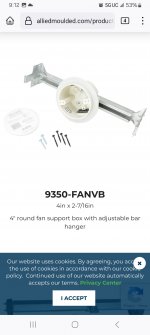jeff48356
Senior Member
- Location
- Livonia, Michigan
When homeowners pull permits to do their own electrical work, and you go out to their houses to inspect it, what are some of the most common things that people do wrong? Examples: Running 14/2 for SABC's, using plastic boxes for ceiling fans..
Do you ever see jobs that are so messed up that you deem that the homeowner doesn't know what he's doing, revoke the permit, then insist he hire a licensed electrician?
Do you ever see jobs that are so messed up that you deem that the homeowner doesn't know what he's doing, revoke the permit, then insist he hire a licensed electrician?



